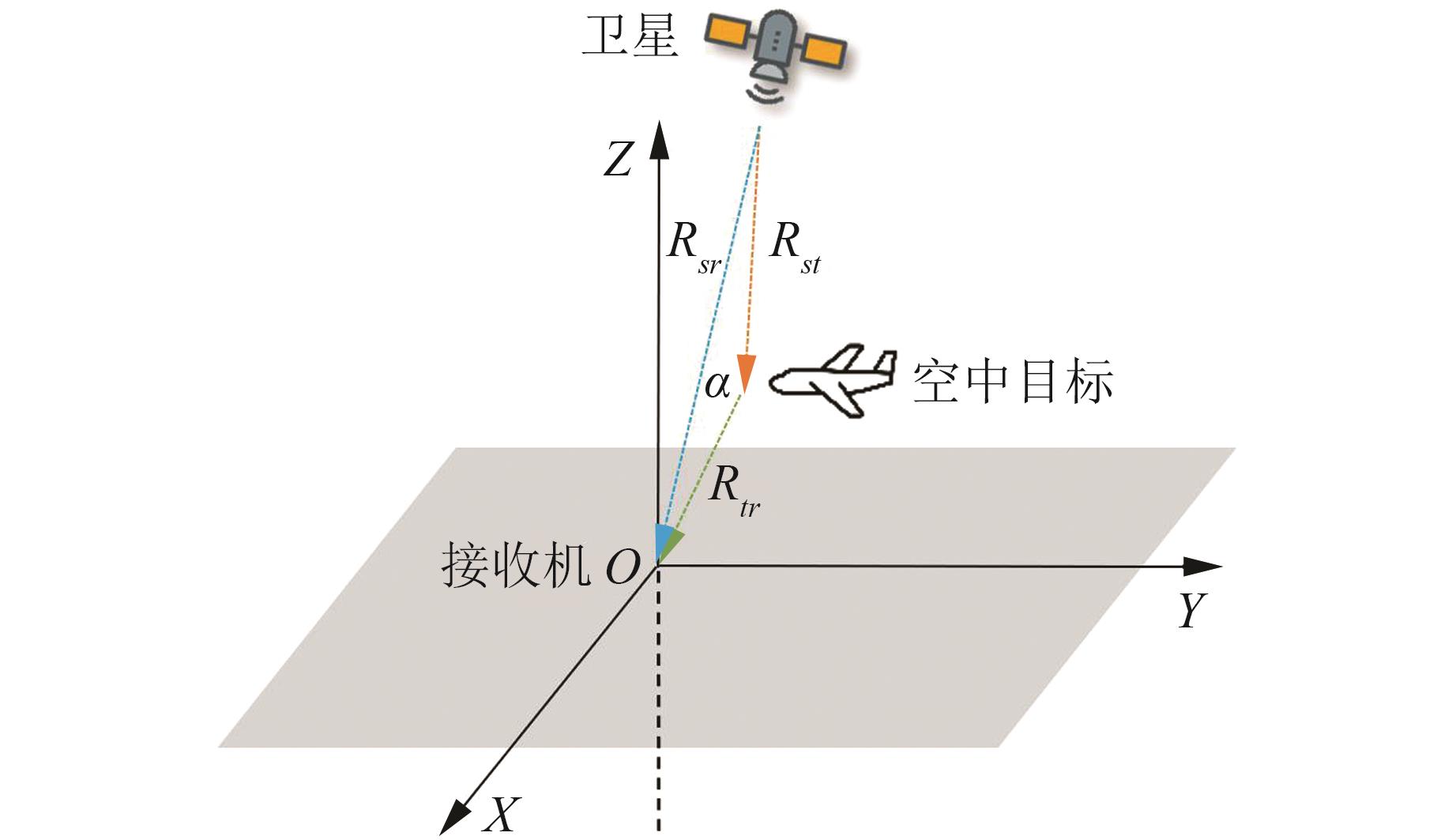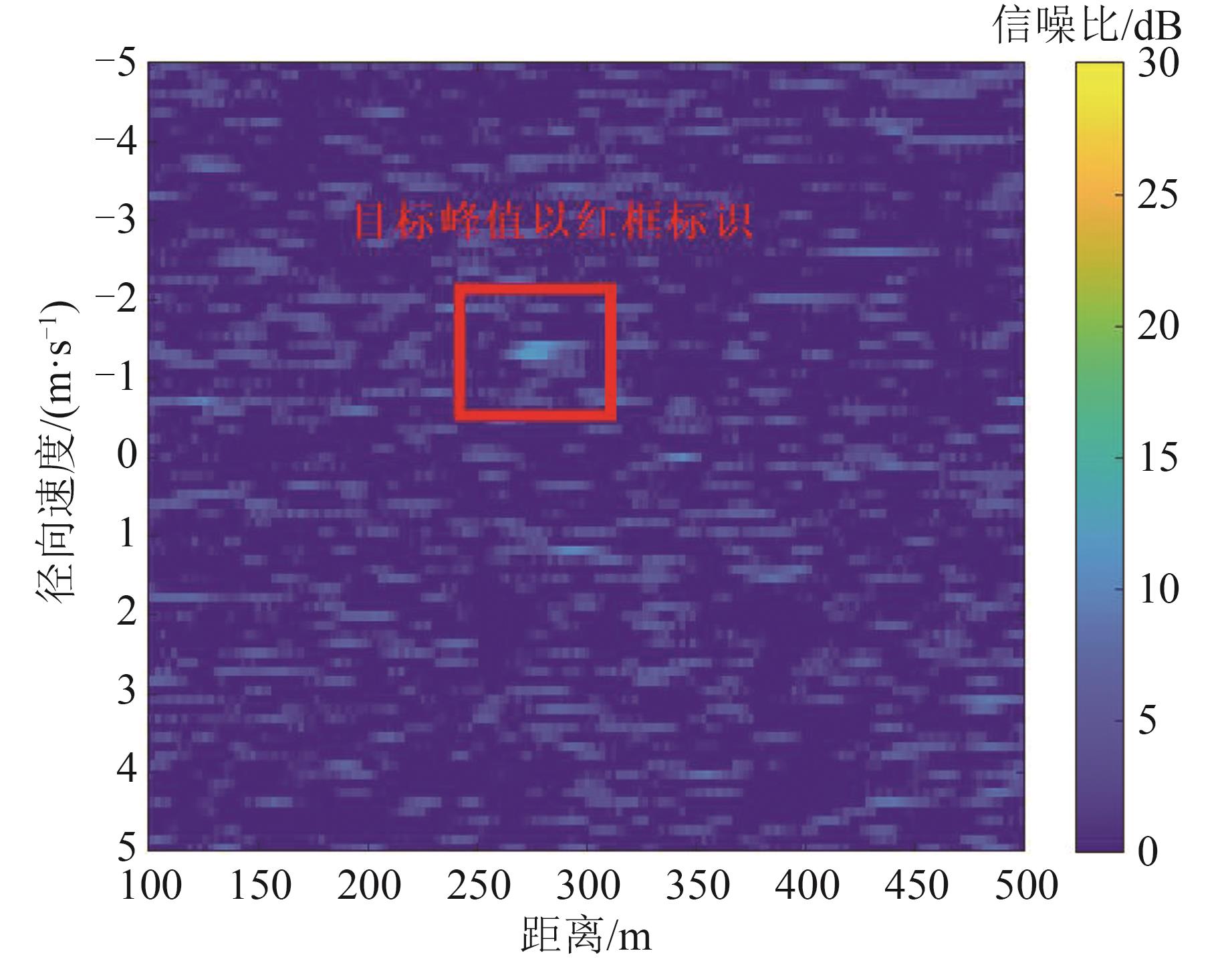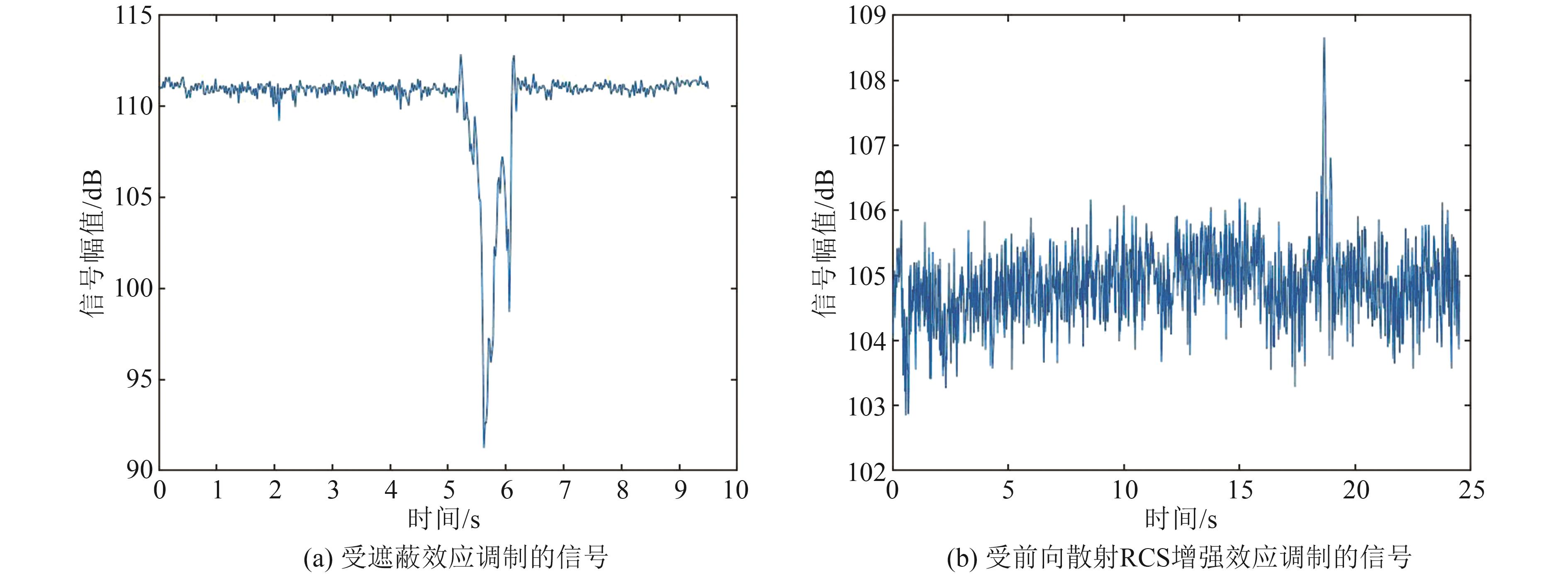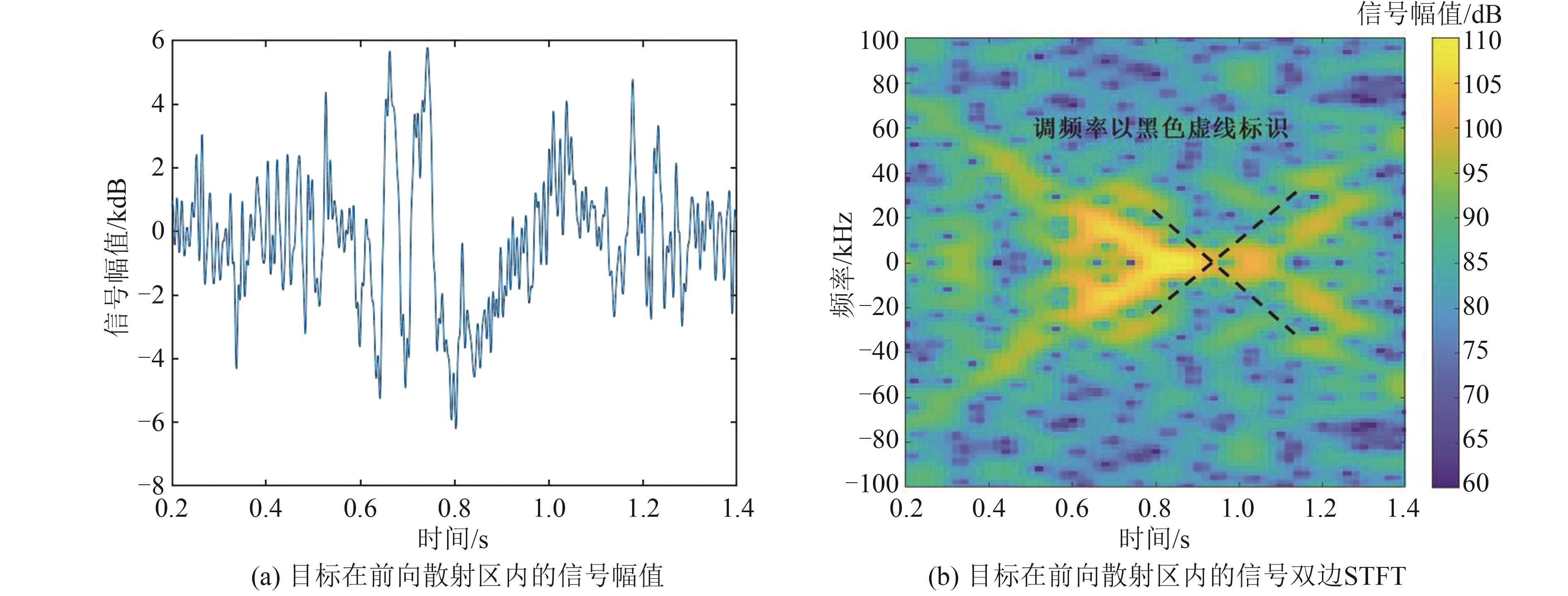A Review of Moving Target Detection Techniques Using GNSS Passive Remote Sensing System
-
摘要:
全球导航卫星系统(global navigation satellite system,GNSS)除了用于导航定位服务之外,因其信号覆盖率高及卫星可见性强等优势,亦可作为被动雷达的机会辐射源完成地表环境和运动目标的遥感探测。但是,其较低的到达地面功率和较窄的信号带宽也给该类系统的应用带来诸多挑战。回顾了GNSS被动雷达遥感系统近30年的发展历程,聚焦运动目标遥感检测技术。通过分析后向散射和前向散射两种GNSS外辐射源探测体制下的动目标检测流程,梳理了相关技术的重点和难点,介绍了国内外在相关问题上取得的研究进展和潜在发展趋势,以期为相关研究提供参考。
Abstract:The global navigation satellite system (GNSS), besides being utilized for navigation and positioning services, also being regarded as signal source of opportunity for remote sensing of Earth surface environments and spatial targets through its advantages of high signal coverage and satellites visibility. Nevertheless, its inherent characteristics, including low power levels and limited bandwidth, pose considerable challenges to relative applications. The development of GNSS-based passive remote sensing system during the past three decades is reviewed, with a focus on the target detection technology. By analyzing the target detection processes of GNSS-based remote sensing system under both backward and forward scattering configurations, the key points and difficulties of relevant technologies are delineated. Progress and potential opportunities achieved domestically and internationally for addressing relative problems are also discussed.
-
http://ch.whu.edu.cn/cn/article/doi/10.13203/j.whugis20240050
-
表 1 主流RCM补偿方法比较
Table 1 Comparison Amongst Mainstream RCM Correction Methods
算法 补偿阶数 基本原理 特点 KT 1 重映射距离向时间轴 无需速度先验信息,无需搜索;存在多普勒模糊问题 MKT 1 补偿掉与多普勒模糊数相关的相位项,并重映射距离向时间轴 无多普勒模糊问题;复杂度较高,需要反复执行KT SKT 2 使用正负重映射参数分别对信号进行二阶KT并相乘,用以移除相关相位项 可同时校正一阶和二阶RCM,但导致奇数阶DCM参数丢失 RFT 1 使用Radon变换求解目标轨迹的斜率,并对速度和距离进行联合搜索 可在校正RCM的同时获得目标的速度信息,但需要帧内目标速度保持不变 MRFT 1 在RFT基础上增加调频率搜索 可以在校正RCM的同时对一阶DCM进行校正,但要求帧内不存在二阶RCM GRFT N 将目标运动表示为N阶多项式并对相关参数进行遍历搜索 理论上可以在任意时间长度上通过高维搜索实现任意动目标的运动补偿,但实际应用中仍旧需要指定具体阶数 表 2 主流多普勒频移时频分析方法比较
Table 2 Comparison Amongst Mainstream Time-Frequency Analysis Methods for Doppler Shift
算法 补偿阶数 基本原理 特点 DFrFT 1 在时频平面按照任意角度进行分数阶傅里叶变换 属于线性时频分析方法,不存在交叉项,但本质上是对调频率的遍历搜索,复杂度较高 DC-DFR分析 1 对DFrFT数值进行重新映射,得到多普勒中心和调频率数据 本质上依旧是DFrFT,但可更直观地考察信号特征和所需估计的参数 LVD分析 1 针对信号的对称参数瞬时自相关函数,引入类似KT的时间轴重映射思想,解耦时间和时延变量 结合了线性和双线性时频分析的优点,理论上具备当前最佳的针对LFM信号的分析性能 STFT N 将时域信号加窗分段,并逐一进行傅里叶变换 线性分析方法,并不局限于特定阶数的时频关系分析,但结果的可用性高度依赖于每段信号的信噪比 WT N 使用一组小波基对信号的频率成分进行逼近和分解 线性时频分析方法,可以很好地分析具有频率突变特征的信号的时频分布,算法的复杂度相对较高 -
[1] Hall C D, Cordey R A. Multistatic Scatterometry[C]//International Geoscience and Remote Sensing Symposium, Edinburgh, UK, 1988.
[2] Zavorotny V U, Gleason S, Cardellach E, et al. Tutorial on Remote Sensing Using GNSS Bistatic Radar of Opportunity[J]. IEEE Geoscience and Remote Sensing Magazine, 2014, 2(4): 8-45.
[3] Rodriguez-Alvarez N, Camps A, Vall-llossera M, et al. Land Geophysical Parameters Retrieval Using the Interference Pattern GNSS-R Technique[J]. IEEE Transactions on Geoscience and Remote Sensing, 2011, 49(1): 71-84.
[4] Wang Y, Morton Y J. Coherent GNSS Reflection Signal Processing for High-Precision and High-Resolution Spaceborne Applications[J]. IEEE Transactions on Geoscience and Remote Sensing,2021,59(1): 831-842.
[5] 贾燕, 金双根, 肖智宇, 等. 全球导航卫星系统反射测量土壤水分遥感:现状与机遇[J]. 武汉大学学报(信息科学版), 2023, 48(11): 1784-1799. Jia Yan, Jin Shuanggen, Xiao Zhiyu, et al. Soil Moisture Remote Sensing Using Global Navigation Satellite System-Reflectometry:Current Status and Opportunity[J]. Geomatics and Information Science of Wuhan University, 2023, 48(11): 1784-1799.
[6] 叶世榕, 罗歆琪, 南阳, 等. 一种改进的星载GNSS-R卷积神经网络海冰检测方法[J].武汉大学学报(信息科学版),2024,49(1): 90-99. Ye Shirong, Luo Xinqi, Yang Nan, et al. An Improved Sea Ice Detection Method Based on Spaceborne GNSS-R Using CNN[J]. Geomatics and Information Science of Wuhan University, 2024, 49(1): 90-99.
[7] 张双成,郭沁雨,马中民,等.星载GNSS⁃R反演土壤湿度研究进展与思考[J].武汉大学学报(信息科学版),2024,49(1): 15-26. Zhang Shuangcheng, Guo Qinyu, Ma Zhongmin, et al. Research Advances and Some Thoughts on Soil Moisture Retrieval by Space-Borne GNSS-R[J]. Geomatics and Information Science of Wuhan University, 2024, 49(1): 15-26.
[8] Chen C, Yan S H, Mei J. A Maritime Target Location Method Using Geometric Semantic Constraints Based on Spaceborne GNSS-R[J]. IEEE Geoscien‑ce and Remote Sensing Letters, 2023, 21: 1-5.
[9] 吴学睿, 宋少辉, 马文骁, 等. 典型水循环参数星载GNSS-R/SoOP-R遥感探测的研究现状[J]. 武汉大学学报(信息科学版), 2024, 49(1): 1-14. Wu Xuerui, Song Shaohui, Ma Wenxiao, et al. A Review of GNSS-R/SoOP-R for Essential Hydrological Climate Variables Detection[J]. Geomatics and Information Science of Wuhan University, 2024, 49(1): 1-14.
[10] Sumantyo J T S, Imura N. Development of GNSS-RO and EDTP Sensors Onboard Microsatellite for Ionosphere Monitoring[C]//IEEE International Geoscience and Remote Sensing Symposium, Milan, Italy, 2015.
[11] Cardellach E, Tomás S, Oliveras S, et al.Sensitivity of PAZ LEO Polarimetric GNSS Radio-Occultation Experiment to Precipitation Events[J]. IEEE Transactions on Geoscience and Remote Sensing, 2015, 53(1): 190-206.
[12] Hu A D, Wu S Q, Wang X M, et al. Improvement of Reflection Detection Success Rate of GNSS RO Measurements Using Artificial Neural Network[J]. IEEE Transactions on Geoscience and Remote Sensing, 2018, 56(2): 760-769.
[13] Ludwig-Barbosa V, Rasch J, Carlström A, et al. GNSS Radio Occultation Simulation Using Multiple Phase Screen Orbit Sampling[J].IEEE Geoscience and Remote Sensing Letters,2020,17(8):1323-1327.
[14] Koch V,Westphal R.New Approach to a Multistatic Passive Radar Sensor for Air/Space Defense[J]. IEEE Aerospace and Electronic Systems Magazine, 1995, 10(11): 24-32.
[15] Saini R, Zuo R, Cherniakov M. Problem of Signal Synchronisation in Space-Surface Bistatic Synthetic Aperture Radar Based on Global Navigation Satellite Emissions: Experimental Results[J]. IET Radar, Sonar & Navigation, 2010, 4(1): 110.
[16] 熊涛. 双基SAR成像算法研究[D].西安:西安电子科技大学,2012. Xiong Tao.Study on Imaging Algorithms for Bistatic SAR[D]. Xi’an: Xidian University, 2012.
[17] Zeng Z F. Generic Signal Synchronisation Algorithm for Passive Global Navigation Satellite System-Based Synthetic Aperture Radar[J]. IET Radar, Sonar & Navigation, 2015, 9(4): 364-373.
[18] 苗铎, 杨东凯, 许志超, 等. GNSS外辐射源雷达低慢小目标探测概率[J]. 北京航空航天大学学报, 2023, 49(3): 657-664. Miao Duo, Yang Dongkai, Xu Zhichao, et al. Low-Altitude, Slow Speed and Small Target Detection Probability of Passive Radar Based on GNSS Signals[J]. Journal of Beijing University of Aeronautics and Astronautics, 2023, 49(3): 657-664.
[19] Chesnokov Y S, Krutikov M V. Bistatic RCS of Aircrafts at the Forward Scattering[C]//International Radar Conference, Beijing, China, 2000.
[20] Hu C, Liu C J, Wang R, et al. Detection and SISAR Imaging of Aircrafts Using GNSS Forward Scatter Radar: Signal Modeling and Experimental Validation[J]. IEEE Transactions on Aerospace and Electronic Systems, 2017, 53(4): 2077-2093.
[21] 刘长江. 前向散射雷达空中运动目标参数估计与SISAR成像研究[D]. 北京: 北京理工大学, 2017. Liu C.Research on Forward Scatter Radar Air Moving Target Parameter Estimation and SISAR Imaging[D]. Beijing: Beijing Institute of Technology, 2017.
[22] Colone F, O’Hagan D W, Lombardo P, et al. A Multistage Processing Algorithm for Disturbance Removal and Target Detection in Passive Bistatic Radar[J].IEEE Transactions on Aerospace and Electronic Systems, 2009, 45(2): 698-722.
[23] Pastina D, Santi F, Pieralice F, et al. Maritime Moving Target Long Time Integration for GNSS-Based Passive Bistatic Radar[J]. IEEE Transactions on Aerospace and Electronic Systems, 2018, 54(6): 3060-3083.
[24] Nasso I, Santi F, Pastina D. Maritime Targets Velocity Estimation in Space-Based Passive Multistatic Radar Using Long Integration Times[J]. IEEE Access, 1864, 9: 163764-163779.
[25] Perry R P, DiPietro R C, Fante R L. SAR Imaging of Moving Targets[J]. IEEE Transactions on Aerospace and Electronic Systems,1999,35(1):188-200.
[26] 张顺生, 曾涛. 基于Keystone变换的微弱目标检测[J]. 电子学报, 2005, 33(9): 1675-1678. Zhang Shunsheng, Zeng Tao. Weak Target Detection Based on Keystone Transform[J]. Acta Electronica Sinica, 2005, 33(9): 1675-1678.
[27] Li Y, Zeng T, Long T, et al. Range Migration Compensation and Doppler Ambiguity Resolution by Keystone Transform[C]//CIE International Conferen‑ce on Radar, Shanghai, China, 2006.
[28] He Z Y, Chen W, Yang Y, et al. Sea Target Detection Using the GNSS Reflection Signals[J]. GPS Solutions, 2023, 27(4): 160.
[29] Huang C, Li Z Y, Wu J J, et al. Multistatic BeiDou-Based Passive Radar for Maritime Moving Target Detection and Localization[C]//IEEE International Geoscience and Remote Sensing Symposium, Yokohama, Japan, 2019.
[30] Carretero-Moya J, Gismero-Menoyo J, Asensio-Lopez A, et al. Small-Target Detection in Sea Clutter Based on the Radon Transform[C]//International Conference on Radar, Adelaide, Australia, 2008.
[31] Rao X, Tao H H, Su J, et al. Axis Rotation MTD Algorithm for Weak Target Detection[J]. Digital Signal Processing, 2014, 26: 81-86.
[32] Xu J, Yu J, Peng Y N, et al. Radon-Fourier Transform for Radar Target Detection, I: Generalized Doppler Filter Bank[J]. IEEE Transactions on Aerospace and Electronic Systems,2011,47(2): 1186-1202.
[33] Zhou X K, Wang P B, Chen J, et al. A Modified Radon Fourier Transform for GNSS-Based Bistatic Radar Target Detection[J]. IEEE Geoscience and Remote Sensing Letters, 2022, 19: 3501805.
[34] Xu J, Xia X G,Peng S B, et al. Radar Maneuvering Target Motion Estimation Based on Generalized Radon-Fourier Transform[J]. IEEE Transactions on Signal Processing, 2012, 60(12): 6190-6201.
[35] Ma H, Tzagkas D, Antoniou M, et al. Maritime Moving Target Indication and Localisation with GNSS-Based MultiStatic Radar: Experimental Proof of Concept[C]//The 18th International Radar Symposium, Prague, Czech Republic, 2017.
[36] Candan C, Kutay M A, Ozaktas H M.The Discrete Fractional Fourier Transform[J].IEEE Transactions on Signal Processing,2000,48(5):1329-1337.
[37] 田瑞琦, 鲍庆龙, 王丁禾, 等. 基于FRFT与Keystone变换的运动目标参数估计算法[J]. 雷达学报, 2014, 3(5): 511-517. Tian Ruiqi, Bao Qinglong, Wang Dinghe, et al. An Algorithm for Target Parameter Estimation Based on FRFT and Keystone Transforms[J]. Journal of Radars, 2014, 3(5): 511-517.
[38] Li Y, Yan S H, Gong J Y. SNR Improvement for Maneuvering Ship Using Weak Echo Under the Condition of BeiDou GEO Satellites[J]. IEEE Journal of Selected Topics in Applied Earth Observations and Remote Sensing, 2022, 15: 1256-1271.
[39] Li Z Y, Santi F, Pastina D, et al. Multi-frame Fractional Fourier Transform Technique for Moving Target Detection with Space-based Passive Radar[J].IET Radar, Sonar & Navigation,2017,11(5): 822-828.
[40] Lü X L, Bi G A, Wan C R, et al. Lv’S Distribution: Principle, Implementation, Properties, and Performance[J]. IEEE Transactions on Signal Processing, 2011, 59(8): 3576-3591.
[41] Li X L,Cui G L, Kong L J,et al. Fast Non-searching Method for Maneuvering Target Detection and Motion Parameters Estimation[J]. IEEE Transactions on Signal Processing, 2016, 64(9): 2232-2244.
[42] Chen J L, Xing M D, Yu H W, et al. Motion Compensation/Autofocus in Airborne Synthetic Aperture Radar: A Review[J]. IEEE Geoscience and Remote Sensing Magazine, 2022, 10(1): 185-206.
[43] Liang X L, Zhang H, Fang G Y, et al. An Improved Algorithm for Through-Wall Target Detection Using Ultra-Wideband Impulse Radar[J]. IEEE Access, 2017, 5: 22101-22118.
[44] Zulkifli S, Balleri A. FMCW Radar Prototype Development for Detection and Classification of Nano-targets[C]//IEEE International Radar Conference, Washington, USA, 2020.
[45] Mubarak K A, Dawood A M, Shubair R M, et al. Improved Analysis of Spaceborne Radar Signals Using Wavelet-Based Techniques[C]//IEEE International Symposium on Signal Processing and Information Technology, Ajman, United Arab Emirates, 2009.
[46] Che Wan Fareez C W F, Kama Azura O, Nur Emileen A R, et al. Forward Scattering Radar (FSR) Ground Target Signal Processing Using Wavelet Technique (WT)[C]//The 16th International Radar Symposium, Dresden, Germany ,2015.
[47] Santi F, Pastina D, Bucciarelli M. Maritime Moving Target Detection Technique for Passive Bistatic Radar with GNSS Transmitters[C]//The 18th International Radar Symposium,Prague,Czech Republic,2017.
[48] Santi F, Pastina D. Application of Track-Before-Detect Techniques in GNSS-Based Passive Radar for Maritime Surveillance[C]//IEEE Radar Conferen‑ce, Boston, USA, 2019.
[49] Orlando D, Ricci G, Bar-Shalom Y. Track-Before-Detect Algorithms for Targets with Kinematic Constraints[J]. IEEE Transactions on Aerospace and Electronic Systems, 2011, 47(3): 1837-1849.
[50] Deng X Y, Bi R R, Liu H B. Threshold Setting of Track-Before-Detect Based on Dynamic Programming for Radar Target Detection[C]//IET International Radar Conference, Xi’an, China, 2013.
[51] Yi W, Fang Z C, Li W J, et al. Multi-frame Track-Before-Detect Algorithm for Maneuvering Target Tracking[J]. IEEE Transactions on Vehicular Technology, 2020, 69(4): 4104-4118.
[52] Zhou X K, Wang P B, Zeng H C, et al. Moving Target Detection Using GNSS-Based Passive Bistatic Radar[J]. IEEE Transactions on Geoscience and Remote Sensing, 2022, 60: 5113415.
[53] Santi F, Pieralice F, Pastina D. Joint Detection and Localization of Vessels at Sea with a GNSS-Based Multistatic Radar[J]. IEEE Transactions on Geoscien‑ce and Remote Sensing, 2019, 57(8): 5894-5913.
[54] Pieralice F, Pastina D, Santi F, et al. Multi-transmitter Ship Target Detection Technique with GNSS-Based Passive Radar[C]//International Conference on Radar Systems, Belfast, UK, 2017.
[55] Zeng H C, Chen J, Wang P B, et al. 2D Coherent Integration Processing and Detecting of Aircrafts Using GNSS-Based Passive Radar[J]. Remote Sensing, 2018, 10(7): 1164.
[56] Zeng H C, Chen J, Wang P B, et al. Moving Target Detection in Multi-static GNSS-Based Passive Radar Based on Multi-Bernoulli Filter[J]. Remote Sensing, 2020, 12(21): 3495.
[57] 黄川, 李中余, 张丽君, 等. 无源多基雷达海面运动目标检测与定位方法[J]. 信号处理, 2020, 36(12): 2016-2023. Huang Chuan, Li Zhongyu, Zhang Lijun, et al. A Maritime Moving Target Detection and Localization Method for Passive Multistatic Radar[J]. Journal of Signal Processing, 2020, 36(12): 2016-2023.
[58] Ma H, Stove A G , Antoniou M, et al. Target Kinematic State Estimation with Passive Multistatic Radar[J]. IEEE Transactions on Aerospace and Electronic Systems, 2021, 57(4): 2121-2134.
[59] Huang C, Li Z Y, Lou M Y, et al. BeiDou-Based Passive Radar Vessel Target Detection: Method and Experiment via Long-Time Optimized Integration[J]. Remote Sensing, 2021, 13(19): 3933.
[60] Wang M X, Li X L, Gao L J, et al. Signal Accumulation Method for High-Speed Maneuvering Target Detection Using Airborne Coherent MIMO Radar[J]. IEEE Transactions on Signal Processing, 2023, 71: 2336-2351.
[61] Wang M X, Li X L, Zhang Z R, et al. Coherent Integration and Parameter Estimation for High-Speed Target Detection with Bistatic MIMO Radar[J]. IEEE Transactions on Geoscience and Remote Sensing, 2023, 61: 5107915.
[62] Li X L, Yang Y C, Sun Z, et al. Multi-frame Integration Method for Radar Detection of Weak Moving Target[J]. IEEE Transactions on Vehicular Technology, 2021, 70(4): 3609-3624.
[63] Ma H, Antoniou M, Stove A G, et al. Maritime Moving Target Localization Using Passive GNSS-Based Multistatic Radar[J]. IEEE Transactions on Geoscience and Remote Sensing,2018,56(8): 4808-4819.
[64] Sadeghi M, Behnia F, Amiri R. Maritime Target Localization from Bistatic Range Measurements in Space-Based Passive Radar[J]. IEEE Transactions on Instrumentation and Measurement,2021,70: 8502708.
[65] Nasso I, Santi F. A Centralized Ship Localization Strategy for Passive Multistatic Radar Based on Navigation Satellites[J]. IEEE Geoscience and Remote Sensing Letters, 2022, 19: 4026805.
[66] 杨东凯, 谭传瑞, 王峰, 等. 基于高度角随机模型的GNSS外辐射源雷达定位算法[J]. 电子与信息学报, 2023: 45(10): 1-9. Yang Dongkai, Tan Chuanrui, Wang Feng, et al. Elevation-Dependent Stochastic Localization Algorithm for GNSS-based Passive Radar[J]. Journal of Electronics & Information Technology, 2023, 45(10): 1-9.
[67] Tan Chuanrui, Li Tang, Chen Wenqian, et al. Evaluation of TDOA Based Air Target Localization Algorithm Using GNSS-Based Passive Radar[J]. Journal of Beijing University of Aeronautics and Astronautics, 2024, DOI:10.13700/j.bh.1001-5965.2023.0685. (谭传瑞, 李唐, 陈文谦, 等. GNSS外辐射源雷达空中目标TDOA定位算法评估[J]. 北京航空航天大学学报, 2024, DOI:10.13700/j.bh.1001-5965.2023.0685.) doi: 10.13700/j.bh.1001-5965.2023.0685 [68] 闫攀, 栗强强, 闫会峰. 基于北斗卫星外辐射源的目标直接定位算法[J]. 无线电工程, 2023, 53(2): 410-416. Yan Pan, Li Qiangqiang, Yan Huifeng. Direct Position Determination of Moving Target Using BeiDou Satellite External Illuminators[J].Radio Engineering, 2023, 53(2): 410-416.
[69] Pastina D, Santi F, Pieralice F, et al. Passive Radar Imaging of Ship Targets with GNSS Signals of Opportunity[J]. IEEE Transactions on Geoscience and Remote Sensing, 2021, 59(3): 2627-2642.
[70] Huang C, Li Z Y, An H Y,et al.Passive Multistatic Radar Imaging of Vessel Target Using GNSS Satellites of Opportunity[J]. IEEE Transactions on Geoscience and Remote Sensing, 2022, 60: 1-6.
[71] He Z Y, Yang Y, Chen W, et al. Moving Target Imaging Using GNSS-Based Passive Bistatic Synthetic Aperture Radar[J].Remote Sensing, 2020, 12(20): 3356.
[72] He Z Y,Chen W,Yang Y, et al. Maritime Ship Target Imaging with GNSS-Based Passive Multistatic Radar[J]. IEEE Transactions on Geoscience and Remote Sensing, 2023, 61: 1-18.
[73] Ustalli N, Pastina D, Lombardo P. Target Motion Parameters Estimation in Forward Scatter Radar[J].IEEE Transactions on Aerospace and Electronic Systems, 2020, 56(1): 226-248.
[74] 李光蕊. 基于双基雷达原理的GNSS反射信号处理方法研究[D]. 西安: 西安电子科技大学, 2021. Li Guangrui. Research on GNSS Reflection Signal Processing Method Based on the Principle of Bistatic Radar[D]. Xi’an: Xidian University, 2021.
[75] 刘宇, 吕晓德, 杨鹏程. 一种无源雷达频域扩展相消批处理杂波对消算法[J]. 雷达学报, 2016, 5(3): 293-301. Liu Yu, Xiaode Lü, Yang Pengcheng. Batch Version of Extensive Cancellation Algorithm for Clutter Mitigation in Frequency Domain of Passive Radar[J]. Journal of Radars, 2016, 5(3): 293-301.
[76] 陈伟, 万显荣, 张勋, 等. 外辐射源雷达多通道时域杂波抑制算法并行实现[J]. 雷达学报, 2014, 3(6): 686-693. Chen Wei, Wan Xianrong, Zhang Xun, et al. Parallel Implementation of Multi-channel Time Domain Clutter Suppression Algorithm for Passive Radar[J]. Journal of Radars, 2014, 3(6): 686-693.
[77] Liu M Q, Gao Z Y, Chen Y F, et al. Passive Detection of Moving Aerial Target Based on Multiple Collaborative GPS Satellites[J]. Remote Sensing, 2020, 12(2): 263.
[78] 郑雨晴, 艾小锋, 徐志明, 等. 基于穿越时刻的前向散射雷达网目标参数估计[J]. 系统工程与电子技术, 2023, 45(5): 1323-1332. Zheng Yuqing, Ai Xiaofeng, Xu Zhiming, et al. Target Parameters Estimation of FSR Net Based on Crossing Times[J]. Systems Engineering and Electronics, 2023, 45(5): 1323-1332.
[79] Colone F, Martelli T, Lombardo P. Quasi-Monostatic Versus near Forward Scatter Geometry in Wi-Fi-Based Passive Radar Sensors[J]. IEEE Sensors Journal, 2017, 17(15): 4757-4772.
[80] Contu M, De Luca A, Hristov S, et al. Passive Multifrequency Forward-Scatter Radar Measurements of Airborne Targets Using Broadcasting Signals[J]. IEEE Transactions on Aerospace and Electronic Systems, 2017, 53(3): 1067-1087.
[81] Behar V, Kabakchiev C, Rohling H. Air Target Detection Using Navigation Receivers Based on GPS L5 Signals[C]//The 24th International Technical Meeting of the Satellite Division of the Institute of Navigation, Portland, USA, 2011.
[82] Liu C J, Hu C, Wang R, et al. GNSS Forward Scatter Radar Detection: Signal Processing and Experiment[C]//The 18th International Radar Symposium, Prague, Czech Republic, 2017.
[83] Suberviola I, Mayordomo I, Mendizabal J. Experimental Results of Air Target Detection with a GPS Forward-Scattering Radar[J]. IEEE Geoscience and Remote Sensing Letters, 2012, 9(1): 47-51.
[84] Gronowski K, Samczyński P, Stasiak K, et al. First Results of Air Target Detection Using Single Channel Passive Radar Utilizing GPS Illumination[C]//IEEE Radar Conference,Boston,USA, 2019.
[85] Ustalli N, Lombardo P, Pastina D. Detection Performance of a Forward Scatter Radar Using a Crystal Video Detector[J]. IEEE Transactions on Aerospace and Electronic Systems,2017,54(3):1093-1114.
[86] Ustalli N, Lombardo P, Pastina D. Generalized Likelihood Ratio Detection Schemes for Forward Scatter Radar[J]. IEEE Transactions on Aerospace and Electronic Systems, 2018, 54(6): 2951-2970.
[87] Zeng T, Hu C, Cherniakov M, et al. Joint Parameter Estimation and Cramer-Rao Bound Analysis in Ground-Based Forward Scatter Radar[J]. EURASIP Journal on Advances in Signal Processing, 2012, 2012(1): 80.
[88] Hu C, Sizov V, Antoniou M, et al. Optimal Signal Processing in Ground-Based Forward Scatter Micro Radars[J]. IEEE Transactions on Aerospace and Electronic Systems, 2012, 48(4): 3006-3026.
[89] Liu C J, Hu C, Zeng T, et al. Signal Modeling and Experimental Verification in GNSS Forward Scatter Radar[C]//The 17th International Radar Symposium, Krakow, Poland, 2016.
[90] De Luca A, Daniel L, Gashinova M, et al. Target Parameter Estimation in Moving Transmitter Moving Receiver Forward Scatter Radar[C]//The 18th International Radar Symposium, Prague, Czech Republic, 2017.
[91] Falconi M T, Lombardo P, Pastina D, et al. A Closed-Form Model for Long- and Short-Range Forward Scatter Radar Signals from Rectangular Conductive Targets[J]. IEEE Transactions on Aerospace and Electronic Systems,2020,56(2): 1370-1390.
[92] De Luca A, Contu M, Hristov S, et al. FSR Velocity Estimation Using Spectrogram[C]//The 17th International Radar Symposium,Krakow,Poland,2016.
[93] Hristov S, Daniel L,Hoare E, et al.Target Shadow Profile Reconstruction in Ground-Based Forward Scatter Radar[C]//IEEE Radar Conference, Arlington, USA, 2015.
[94] 吴云阳. 基于双(多)基地阴影逆合成孔径雷达的目标定位及成像研究[D]. 西安: 西安电子科技大学, 2007. Wu Yunyang. Study of Orientation and Imaging Based on Bistatic (Multistatic) Shadow Inverse Synthetic Aperture Radar[D]. Xi’an: Xidian University, 2007.
[95] Chapurskiy V V, Sablin V N. SISAR: Shadow Inverse Synthetic Aperture Radiolocation[C]//IEEE 2000 International Radar Conference,VA,USA,2000.
[96] 祝兴晟. 基于北斗导航卫星的前向散射波飞行器探测方法研究[D]. 哈尔滨: 哈尔滨工业大学, 2019. Zhu Xingsheng. A Research on Target Aircraft Detection Methods Based on Forward Scattering Wave of Beidou Navigation Satellite[D]. Harbin: Harbin Institute of Technology, 2019.
[97] Yi W, Fang Z C, Wen M. An Efficient Coherent Multi-frame Track-Before-Detect Algorithm in Radar Systems[C]//IEEE Radar Conference, Seattle, USA, 2017.
[98] Wachtl S, Koch V, Schmidt L P. Global Navigation Satellite Systems in Passive Surveillance Applications[C]//Tyrrhenian International Workshop on Digital Communications-Enhanced Surveillance of Aircraft and Vehicles, Rome, Italy, 2014.
[99] Ai X F, Zheng Y Q, Xu Z M, et al. Parameter Estimation for Uniformly Accelerating Moving Target in the Forward Scatter Radar Network[J]. Remote Sensing, 2022, 14(4): 1006.
[100] 李海鹏. 多基地雷达栅栏覆盖问题研究[D]. 西安: 西安电子科技大学, 2022. Li Haipeng. Research on Barrier Coverage of Multistatic Radar[D]. Xi’an: Xidian University, 2022.
[101] 陈宏烨, 赫志达. 基于区域离散化的无源雷达布站优化方案[J]. 探测与控制学报, 2022, 44(4): 41-47. Chen Hongye, He Zhida. Optimization Scheme of Passive Radar Station Placement Based on Regional Discretization[J]. Journal of Detection & Control, 2022, 44(4): 41-47.
[102] Li Y H, Rizos C,Donskoi E, et al. Terrain Imaging Using a SAR System Based on Reflected GPS Signals[J].Wuhan University Journal of Natural Scien‑ces, 2003, 8(2): 659-664.
[103] Antoniou M, Cherniakov M. GNSS-Based Bistatic SAR: A Signal Processing View[J]. EURASIP Journal on Applied Signal Processing,2013(1): 98.
[104] Yan S H,Zhou H, Gong J Y. GNSS Imaging: A Case Study of Tree Detection Based on BeiDou GEO Satellites[J]. Progress in Electromagnetics Research C, 2018, 84: 227-240.
[105] Wu S Y, Xu Z C, Wang F, et al. An Improved Back-Projection Algorithm for GNSS-R BSAR Ima‑ging Based on CPU and GPU Platform[J]. Remote Sensing, 2021, 13(11): 2107.
[106] 吴世玉, 杨东凯, 王峰, 等. 直反信号协同的GNSS-R BSAR距离多普勒成像算法[J]. 北京航空航天大学学报, 2023, 49(3): 588-596. Wu Shiyu, Yang Dongkai, Wang Feng, et al. GNSS-R BSAR Range-Doppler Imaging Algorithm Based on Synchronization of Direct and Echo Signal[J]. Journal of Beijing University of Aeronautics and Astronautics, 2023, 49(3): 588-596.
[107] Zheng Y, Zhang Z X, Wu P, et al. Decimetre Level Range Resolution for BeiDou B3I Signal-Based Passive SAR Imaging: Proof-of-Concept Experimental Demonstrations[J]. IEEE Access, 2927, 9: 22927-22938.
-
期刊类型引用(46)
1. 刘春雷,张媛静,陆晨明,李亚松,李剑锋. 基于时序InSAR的九龙江河口地区地面沉降时空演变规律及成因分析. 应用海洋学学报. 2024(01): 116-125 .  百度学术
百度学术
2. 陈瑞瑞,孙颢月,朱紫若,蒋雪中,陈沈良,陈静. 黄河三角洲地面沉降研究进展与未来展望. 海岸工程. 2024(01): 1-23 .  百度学术
百度学术
3. 赵凤阳,周吕,魏玉业. 融合改进鲸鱼算法解缠的梧州市地面沉降InSAR监测. 遥感信息. 2024(01): 52-58 .  百度学术
百度学术
4. 侯永浩,张兴,李晓民,李宗仁. SBAS-InSAR技术在地质灾害调查中的应用. 北京测绘. 2024(10): 1477-1481 .  百度学术
百度学术
5. 柳新强,姜刚,刘军峰,贺国伟. PS-InSAR和SBAS-InSAR的地表沉降监测对比研究——以雄安新区为例. 工程勘察. 2023(01): 62-67 .  百度学术
百度学术
6. 曾敏,皮鹏程,赵信文,陈松,彭红霞,侯清芹,孙慧敏,薛紫萱. 基于PS-InSAR的珠江口典型填海造地区地面沉降时空特征研究. 华南地质. 2023(01): 116-126 .  百度学术
百度学术
7. 李文慧,王志伟,赵月,王翔. 基于SNAP-StaMPS方法的高速公路沿线地面沉降监测. 测绘工程. 2023(03): 36-43 .  百度学术
百度学术
8. 周定义,左小清,赵志芳,喜文飞,葛楚. 基于SBAS-InSAR和改进BP神经网络的城市地面沉降预测. 地质通报. 2023(10): 1774-1783 .  百度学术
百度学术
9. 刘泽洲,卢才武,章赛,李萌,和郑翔. 基于多阈值目标提取的时序InSAR矿区地表沉降监测研究. 中国矿业. 2022(08): 79-85 .  百度学术
百度学术
10. 王新田,刘增珉,陈建忠,梁菲,孟萌,李天鹤. 山东省地表形变InSAR监测与分析. 测绘通报. 2022(S2): 130-134 .  百度学术
百度学术
11. 邓晓景,曲国庆,张建霞,席换,王晖. 融合升降轨PS-InSAR东营市地面沉降监测. 山东理工大学学报(自然科学版). 2021(01): 10-16 .  百度学术
百度学术
12. 杨利,薛东剑,王海方,付林,张婷. 五龙沟矿区时序InSAR地表形变监测. 中国矿业. 2021(03): 107-112 .  百度学术
百度学术
13. 程琳琳,杨玉曼,李月颖,孙梦尧,王振威,焦路尧. 矿业型村镇转型期发展问题分析与策略研究:以北京市门头沟区为例. 中国矿业. 2021(03): 101-106 .  百度学术
百度学术
14. 王辉,曾琪明,焦健,陈继伟. 结合序贯平差方法监测地表形变的InSAR时序分析技术. 北京大学学报(自然科学版). 2021(02): 241-249 .  百度学术
百度学术
15. 付云霞,管勇,王晓丹,王建收,尹政,周晓雪,王青,徐美君. 大型河口三角洲地面沉降机制研究——以黄河三角洲为例. 海岸工程. 2021(02): 83-95 .  百度学术
百度学术
16. 关金环,高明亮,宫辉力. 首都国际机场区域差异性沉降原因探讨. 测绘科学. 2021(09): 67-75 .  百度学术
百度学术
17. 柴华彬,胡吉彪,耿思佳. 融合实测数据的地表沉降SBAS-InSAR监测方法. 煤炭学报. 2021(S1): 17-24 .  百度学术
百度学术
18. 程霞,张永红,邓敏,吴宏安,康永辉. Sentinel-1A卫星的黄河三角洲近期地表形变分析. 测绘科学. 2020(02): 43-51 .  百度学术
百度学术
19. 卢旺达,韩春明,岳昔娟,赵迎辉,周格仪. 基于Sentinel-1A数据的天津地区PS-InSAR地面沉降监测与分析. 遥感技术与应用. 2020(02): 416-423 .  百度学术
百度学术
20. 向淇文,潘建平,张广泽,徐正宣,张定凯,涂文丽. 基于SBAS技术的川藏铁路折多山地区地表形变监测与分析. 测绘工程. 2020(04): 48-54+59 .  百度学术
百度学术
21. 张金盈,崔靓,刘增珉,王新田,林琳,徐凤玲. 利用Sentinel-1 SAR数据及SBAS技术的大区域地表形变监测. 测绘通报. 2020(07): 125-129 .  百度学术
百度学术
22. 狄桂栓. 基于InSAR技术的黄河三角洲区域地表形变浅析. 地理空间信息. 2020(09): 106-109+8 .  百度学术
百度学术
23. 高辉,罗孝文,吴自银,阳凡林. 基于时序InSAR的珠江口大面积地面沉降监测. 海洋学研究. 2020(02): 81-87 .  百度学术
百度学术
24. 韩红花. 黄河三角洲区域地表形变监测研究. 山东国土资源. 2020(11): 69-72 .  百度学术
百度学术
25. 夏元平,陈志轩,张毅. 南昌市地面沉降InSAR监测及影响因子分析. 测绘科学. 2020(11): 115-122+129 .  百度学术
百度学术
26. 贺跃光,肖亮. 某水溶开采矿区短基线集InSAR高相干点探测. 中国锰业. 2019(01): 89-93 .  百度学术
百度学术
27. 张静,丁黄平,刘纯,谢文然,时雨. 基于InSAR技术的盘锦地区地面沉降研究. 世界地质. 2019(02): 574-580 .  百度学术
百度学术
28. 韩红超,符华年,张文峰,温浩. InSAR、水准多维沉降监测体系建设及应用研究. 测绘通报. 2019(S1): 236-241 .  百度学术
百度学术
29. 师芸,李伟轩,唐亚明,席磊,孟欣. 时序InSAR技术在地球环境监测及其资源管理中的应用:以交城-清徐地区为例. 武汉大学学报(信息科学版). 2019(11): 1613-1621 .  百度学术
百度学术
30. 杨帆,王道顺,张磊,张子文. 基于时序InSAR的隧道工程形变监测与分析. 测绘与空间地理信息. 2019(10): 1-4 .  百度学术
百度学术
31. 黄洁慧,谢谟文,王立伟. 基于SBAS-InSAR技术的白格滑坡形变监测研究. 人民长江. 2019(12): 101-105 .  百度学术
百度学术
32. 黄洁慧,谢谟文,王立伟. 基于差分干涉合成孔径雷达技术的米林滑坡形变监测. 科学技术与工程. 2019(25): 7-12 .  百度学术
百度学术
33. 李锁乐,吴宏安,张永红,康永辉,左振华. 包头市地面沉降高分辨率时序InSAR监测. 测绘科学. 2018(09): 76-80 .  百度学术
百度学术
34. 杨帆,张磊,张子文,赵增鹏. 利用短基线集InSAR技术监测抚顺市地面沉降. 测绘通报. 2018(03): 84-88 .  百度学术
百度学术
35. 张静,冯东向,綦巍,周雪,赵玉星. 基于SBAS-InSAR技术的盘锦地区地面沉降监测. 工程地质学报. 2018(04): 999-1007 .  百度学术
百度学术
36. 贺晓阳,赵盟,程存付. 小基线集技术在矿区地表形变监测中的应用. 河南科技. 2018(13): 97-98 .  百度学术
百度学术
37. LIU Xiao,LIU Jie,FENG Xiuli. Inversion and Prediction of Consolidation Settlement Characteristics of the Fluvial Sediments Based on Void Ratio Variation in the Northern Modern Yellow River Subaqueous Delta, China. Journal of Ocean University of China. 2018(03): 545-554 .  必应学术
必应学术
38. 李达,邓喀中,高晓雄,牛海鹏. 基于SBAS-InSAR的矿区地表沉降监测与分析. 武汉大学学报(信息科学版). 2018(10): 1531-1537 .  百度学术
百度学术
39. 张炜,张伟胜,张东升,胡文敏,孙毓言,唐佳佳. 采动覆岩活动规律的“空-地”监测技术. 中国矿业大学学报. 2018(06): 1212-1223 .  百度学术
百度学术
40. 王小侣. 水电站大坝400V备自投改造研究. 河南科技. 2018(19): 90-91 .  百度学术
百度学术
41. 张磊,杨帆,李超飞,赵增鹏,张子文. 宁波地面沉降的短基线集监测与分析. 测绘科学. 2017(12): 77-82 .  百度学术
百度学术
42. 陈继伟,曾琪明,焦健,赵斌臣. Sentinel-1A卫星TOPS模式数据的SBAS时序分析方法——以黄河三角洲地区为例. 国土资源遥感. 2017(04): 82-87 .  百度学术
百度学术
43. 王萍. 沉降观测技术在高层建筑施工中的应用. 建材与装饰. 2017(35): 19-20 .  百度学术
百度学术
44. 史秀保,徐宁,温浩,李春进. 一种小基线地表形变监测精度评价方法. 测绘通报. 2016(08): 70-73+91 .  百度学术
百度学术
45. 于丹,杨子玉,庄岩,于均园. 时序分析法在沈阳地铁二号线变形预测的应用. 沈阳建筑大学学报(自然科学版). 2016(03): 453-458 .  百度学术
百度学术
46. 王霖郁,李辉. 一种枝切法和质量图相结合的InSAR相位解缠算法. 应用科技. 2016(05): 49-53 .  百度学术
百度学术
其他类型引用(25)





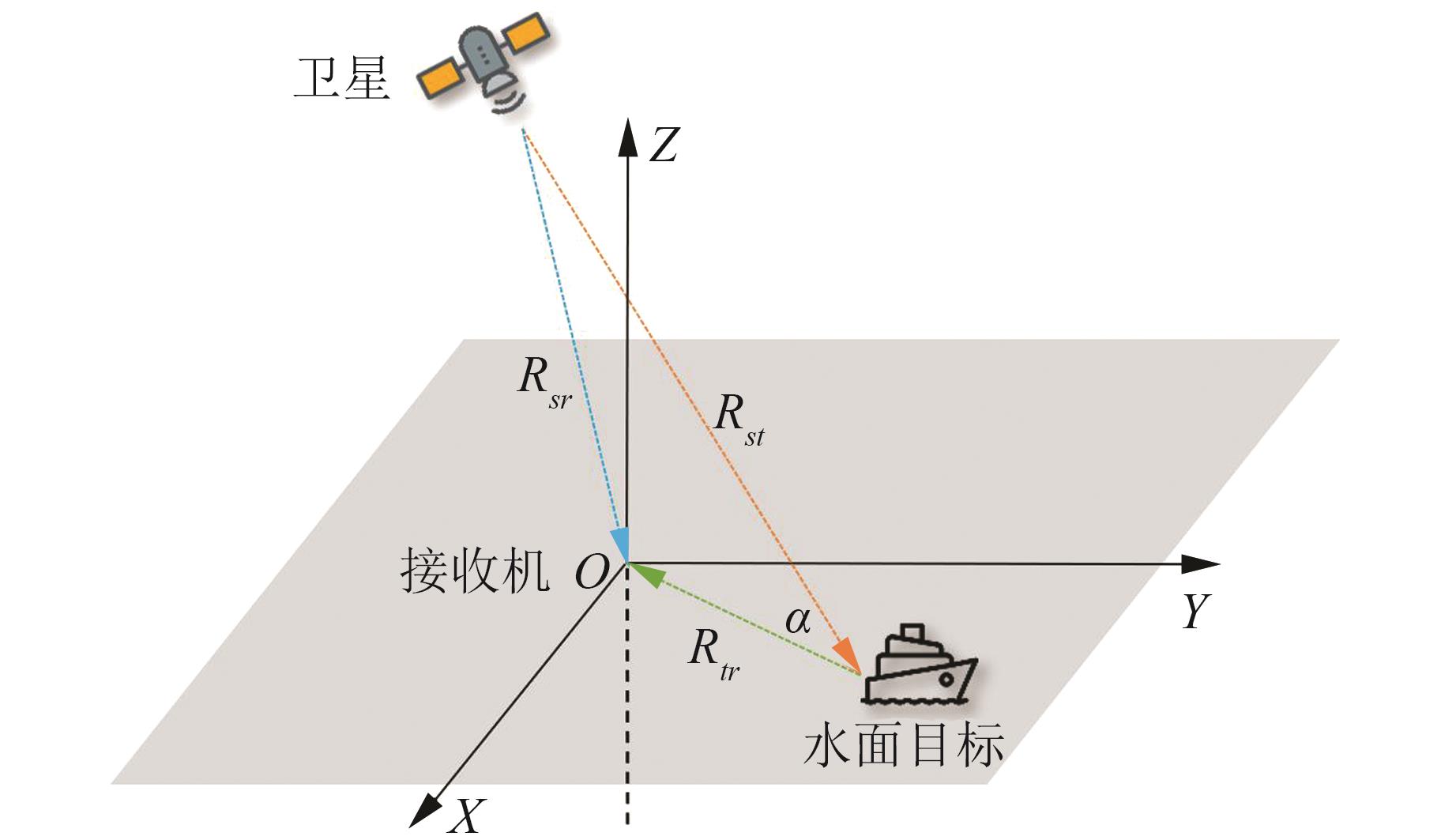
 下载:
下载:
